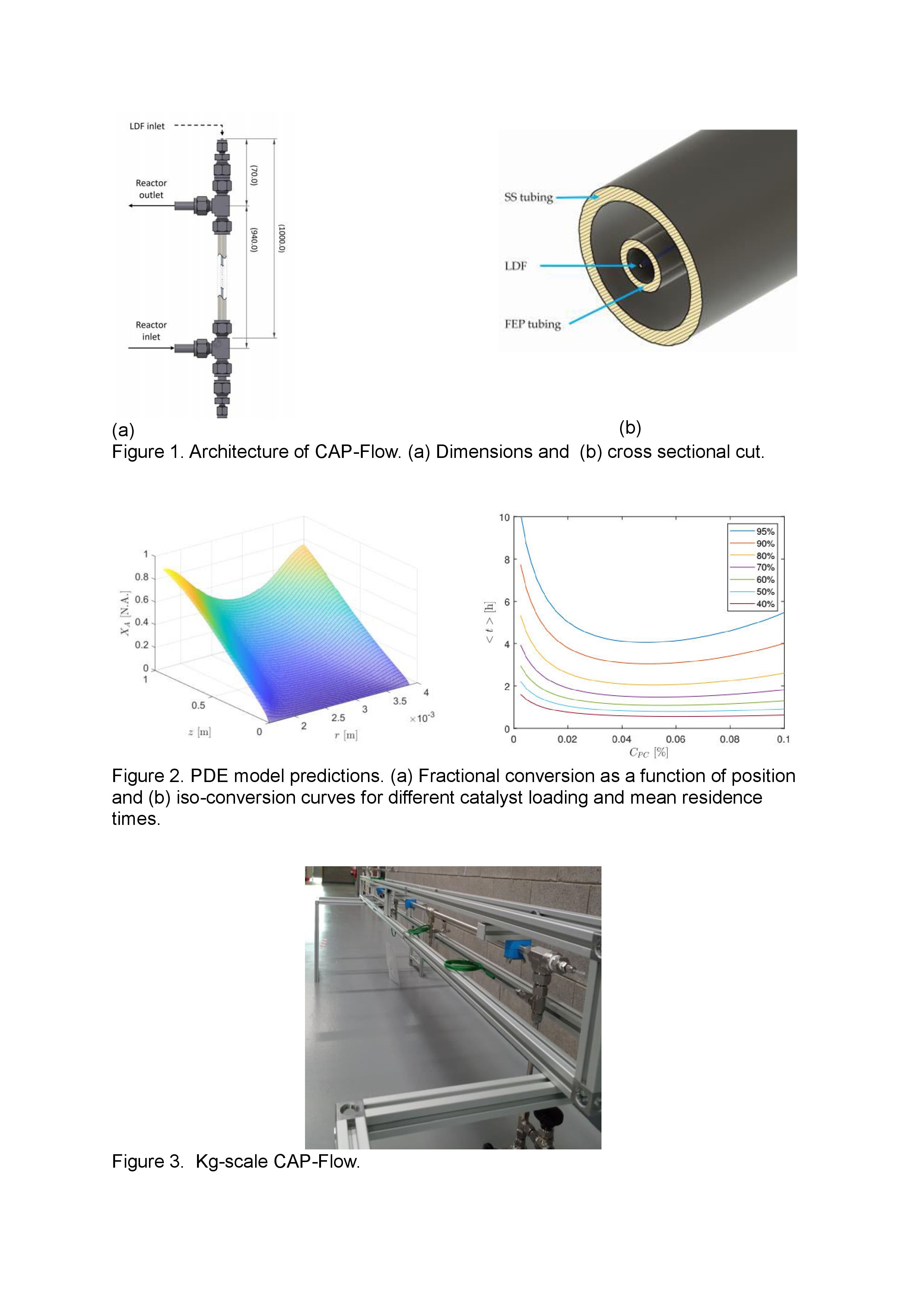2024 AIChE Annual Meeting
(344c) Laser-Driven Innovation: Advancing Pharmaceutical Synthesis with Fiber-Optic Photoreactors
Authors
The revolutionary progress in chromophore complexes that exhibit exceptional light absorption in the visible spectrum has coincided synergistically with the evolution of LEDs. Nevertheless, the utilization of LEDs presents notable hurdles in the design of photoreactors, including issues related to heat generation, light dispersion, safety and varying emissions. In this context, we present and assess a novel laser-driven Continuous Annular Photoreactor (CAP-Flow), which tackles these obstacles by employing radial light diffusing fibres (LDF) coupled with a laser diode through a fibre- optic cable.
Laser technology presents numerous compelling advantages compared to LEDs. Notably, lasers emit highly monochromatic light with narrower spectral bands, which leads to significantly enhanced conversion rates in photochemical reactions and reduces the absorption of photons by unwanted species. Additionally, lasers exhibit low beam divergence, ensuring superior spatial control and minimizing photon loss by avoiding unintended areas of illumination.
Moreover, the operational convenience of transporting photons generated elsewhere into the synthesis area through optic fibres streamlines processes, enhancing overall operational ease. The use of optical fibre-coupled diode lasers offers additional benefits beyond heat management. Firstly, it eliminates the need to position electrical equipment close to the photoreactor, thereby enhancing safety by reducing the risk of ignition near flammable solvents. Secondly, this setup has the potential to obviate the requirement for ATEX solutions in production areas.
The CAP-Flow system is highly modular and capable of continuous operation. It is constructed using standard fluidic components, with the Laser Diode Fiber (LDF) positioned inside and safeguarded by transparent FEP tubing. This tubing traverses through a stainless steel cylindrical housing, forming an annulus. The visual representation of the CAP-Flow system and a schematic depicting its cross-sectional area are illustrated in Figure 1a and Figure 1b, respectively.
The efficacy of the CAP-Flow system's architecture was assessed on a small scale utilizing a 500 mW laser diode, employing ferrioxalate actinometry and the C-N cross-coupling of 4-bromobenzotrifluoride and pyrrolidine as a model application. Actinometry experiments revealed that the CAP-Flow system surpassed other flow technologies reliant on LEDs and lamps. Additionally, the sample reaction demonstrated a Quantum Yield (QY) of up to 3 mol einstein-1, a value only exceeded in the literature by a laser-driven Continuous Stirred-Tank Reactor.
The well-defined geometry and photon irradiation fields within the CAP-Flow system enable mathematical modeling. A partial differential equation (PDE) model was developed, coupling the velocity profile, irradiation profile, and reaction kinetics with the equation of continuity. Solving the PDE provides the ability to track fractional conversion as a function of both radial and axial positions within the reactor, as illustrated in Figure 2(a). Crucial parameters such as kinetic constants and diffusivity can be derived from experimental data using the PDE model and the least squares method. This facilitates the optimization of photocatalyst loading and reactor geometry. Figure 2(b) illustrates iso-conversion curves for different photocatalyst concentrations and mean residence times.
A kg-scale CAP-Flow system has been assembled to evaluate the scalability of the lab-scale prototype. The CAP-Flow's volume was increased sixteen-fold, while the maximum laser power was boosted 250 times, achieved by employing a high-power 500 W blue laser and a distinct type of radial LDF. Figure 3 provides a visual representation of the large-scale CAP-Flow system. The experiments aimed to demonstrate the versatility and scalability of the system, while also validating the predictive accuracy of the PDE model.
